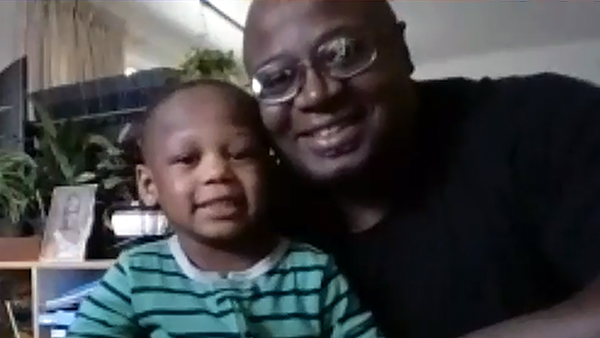Episode 7: My Virtual Preschool Classroom
Early childhood special educator Shawna Cook shows how she created a virtual classroom to engage her preschoolers and their families. (12 min.)
Facilitator Guide
- Early Care and Education Environment Indicators and Elements of High-Quality Inclusion: E2: Family Partnerships, E6: Instruction
- DEC Recommended Practices: Family, Instruction
In this episode, young children learn through hands-on activities. Take note of the creative strategies and materials Michelle uses to engage children and their families through virtual learning.
Reflection Questions
- Shawna Cook created a virtual classroom to increase family and child engagement, provide visuals and offer choices for remote learning. What is your definition of engagement and why is it especially important within the remote learning environment?
- In this video Shawna shared how she was able to transform her classroom's Family Board into a virtual format. What systems have you created to share important information with families? How do you offer opportunities for bi-directional, shared dialogue?
- We see multiple examples of how to provide targeted resources to help support continued learning at home. Provide an example of how you share helpful resources with families. How do you provide guidance around these resources? What are your go-to sites for accessing resources?
- Shawna learned of specific barriers families were facing with the virtual classroom platform from a survey. What opportunities are you offering families to provide feedback around instructional practices? How have your practices changed as a result of collecting and intentionally incorporating feedback from families?
- Shawna described how she had to learn new ways to provide communication, instruction, and support online to adjust to providing instruction in the virtual learning environment. What is a new technique, skill, or strategy you have learned as a result of having to adjust to a new way of providing instruction and support to children and families? How will your instructional approach and communication change moving forward as a result?
Group Activity
Shawna created a virtual classroom to support the children and families in her classroom. She began with written lesson plans, but found that these didn t engage families. She created a Bitmoji Classroom to create this online space. For this activity, read Educators Turn to Bitmoji to Build Community and Engagement, and consider these questions together in small groups:
- What were the most striking features about Shawna s virtual classroom?
- Which features do you think were most helpful for children?
- Which features do you think were most helpful for families?
- What is your comfort level with technology and have you tried a strategy similar to Shawna's?
- Which method would you use from the article to find out more about setting up a virtual classroom? Would you read more articles? Watch a YouTube video? Visit the Facebook page? Jump right in and try it out with the Bitmoji app?
- Consider the parallels between our different perspectives as adults re: virtual classroom features, use of technology and methods of exploration and how those differences might also be true for the children and families in our programs. How can we best individualize given those differences?
Additional Resources
- Reaffirming Key Early Childhood Practices During a Pandemic (ECTA Center)
- Epstein's Framework of Six Types of Involvement (Center for the Social Organization of Schools)
- Understanding Family Engagement Outcomes: Research to Practice Series: Family Well-Being (National Center on Parent, Family and Community Engagement)

